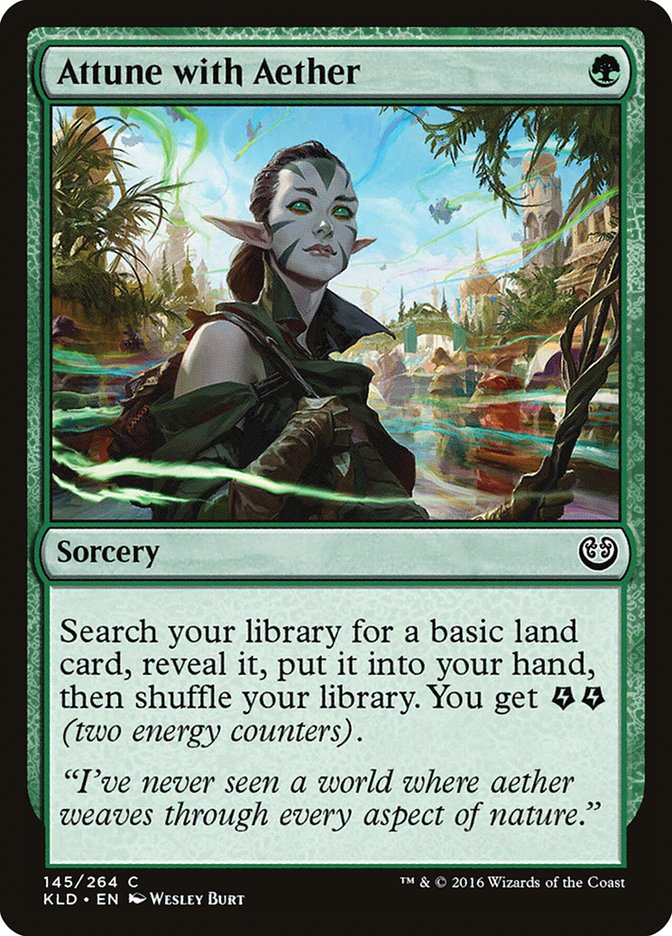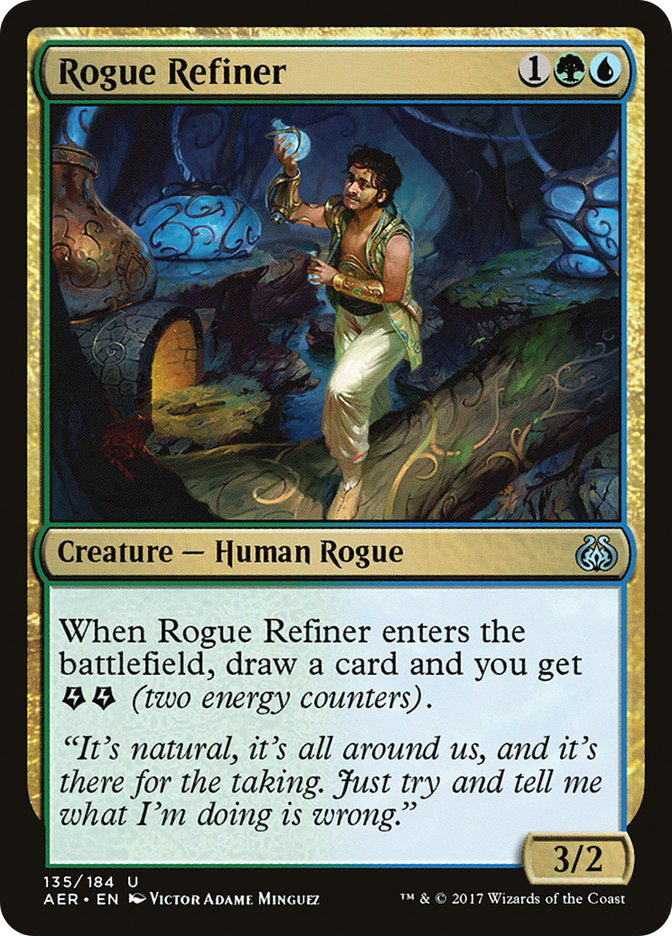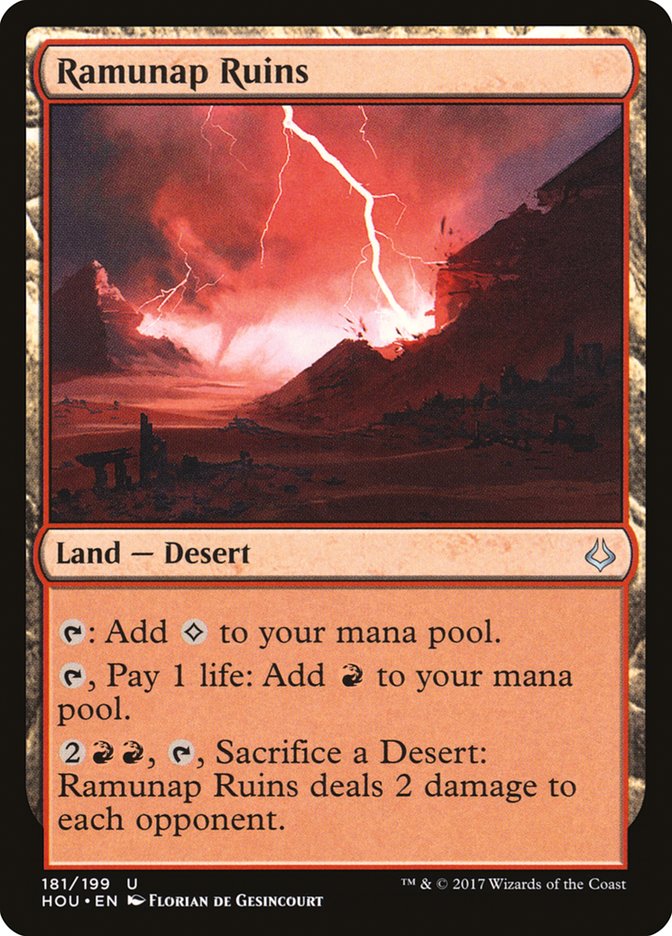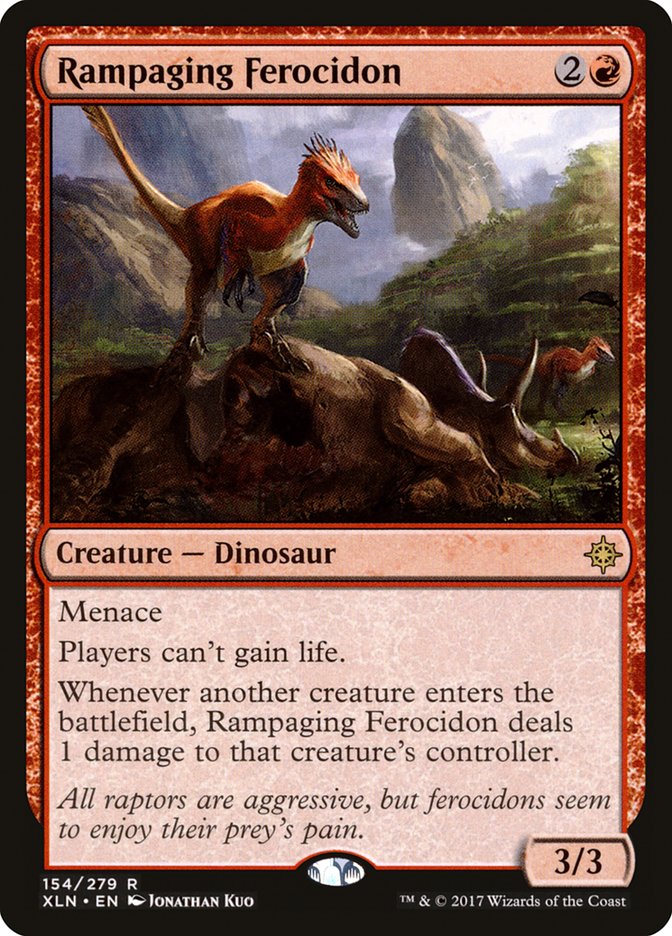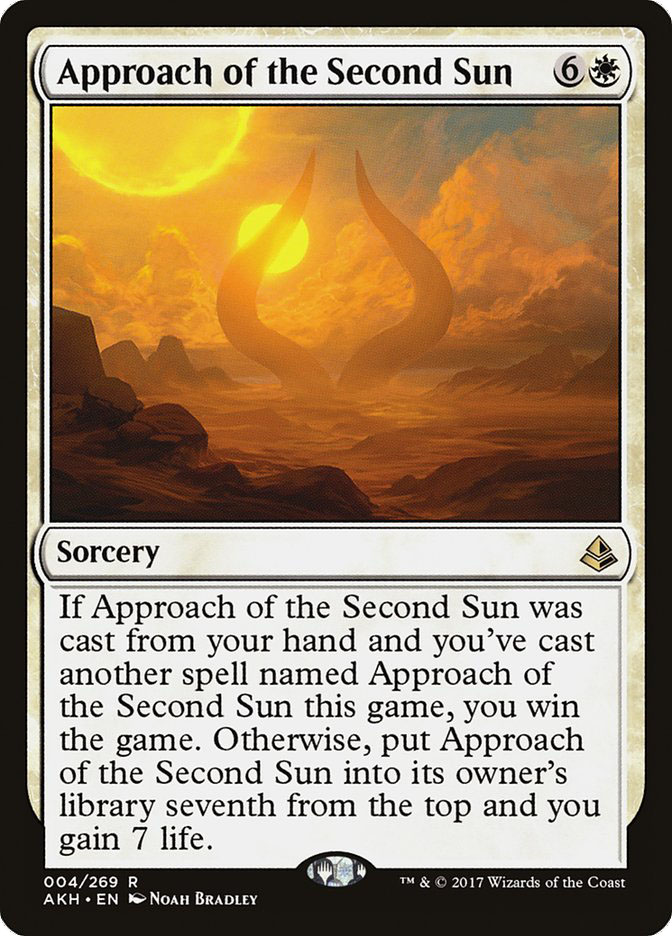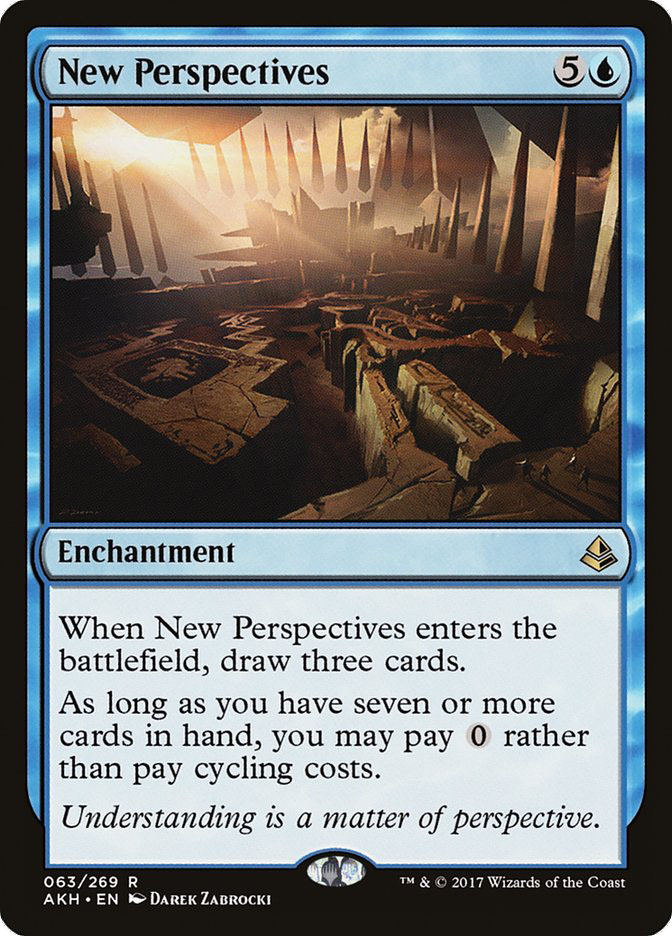[Welcome to
[card name="Fact or Fiction"]Fact or Fiction!
[/card]
This week, Shaun of the Dead enthusiast Gerry Thompson and Los Angeles Clippers apologist Patrick Sullivan take on five pressing questions about the
latest Banned and Restricted announcement by Wizards of the Coast. Read
their answers and vote for the winner in the poll at the end!]
1.Banning Attune with Aether was a good decision.
Gerry Thompson: Fact.
In order to understand whether or not these bans were good decisions or
not, you have to understand the goals of Wizards of the Coast when making
these decisions. Ian Duke’s
article
about the announcement lays it all out:
“When examining candidates for banning, we analyzed what makes energy decks
so powerful, consistent, and difficult to counter. Our goals were as
follows:
-
-Reduce the overall win percentage of Temur Energy and other related
energy variants, while still preserving the competitive capability of
the core of the deck. -
-Open space in the metagame for other decks to excel above energy decks
in certain areas, and to force energy decks to build toward different
strengths and weakness. - -Allow for easier counterplay against energy decks.
-
-Preserve the most fun gameplay and deck-building elements, while
reducing frustrating ones.”
All in all, those are reasonable goals, although lofty.
Once you see their list of goals, you can understand why WotC chose Attune
with Aether and Rogue Refiner to get the axe out of all the energy cards.
Losing to a Longtusk Cub, Whirler Virtuoso, or Bristling Hydra can each be
frustrating in their own right, but the real issues were the cards that
gave you energy for doing things you already wanted to be doing.
They didn’t want to completely wipe the energy mechanic from Standard, so
banning the enablers makes sense.
Patrick Sullivan: Fact.
In this column last week,I spoke about having a foundation of goals and parameters to focus the
discussion around. Clearly, Wizards wanted to take a much more aggressive
approach than the one I articulated last week. I still think I would prefer
a more conservative approach, but I think it’s more helpful to discuss the
changes in light of the goals Wizards has, rather than the goals I think
may be more appropriate or achievable.
Within that aggressive framework, I think Attune with Aether is a
justifiable ban. It takes a substantial amount of rate and consistency away
from the deck, and if you view “the metagame feels significantly different
post-ban” as the most valuable good, taking away Attune is an effective
measure.
2.Banning Rogue Refiner was a good decision.
Gerry Thompson: Fact.
Doing away with Attune with Aether and Rogue Refiner weakens energy
significantly. Imagine a world where Temur misses a land drop or floods a
little more often. Imagine that Longtusk Cub has one fewer +1/+1 counter
earlier or where Whirler Virtuoso makes two fewer Thopters per game.
Temur is mortal again.
The efficiency of energy was the problem, not the payoffs themselves. Temur
was doing more powerful things than most of the decks in Standard on a
regular basis. Temur was also the king of the sideboard games.
Patrick Sullivan: Fact.
Even in my more conservative world, Rogue Refiner is a challenging card to
justify. It doesn’t speak to the energy mechanic in any specific way, it
creates dubious incentives, it crowds out more novel cards-it’s All Of The Bad Things that have emerged from the last few years of
design sensibility. I think the world post-ban, regardless of energy being
viable or not, will be better without Rogue Refiner.
3.Banning Ramunap Ruins was a good decision.
Gerry Thompson: Fact.
Ramunap R-I mean, Mono-Red Aggro, was the boogeyman to a host of cool decks
in Standard that otherwise would have had a shot against Temur Energy.
Again, the goal is not to cripple or obliterate Mono-Red from existence,
only to weaken it.
“Allow for easier counterplay” was a major selling point in this
announcement. There were some games where you’d get burned out from eight
just by Mono-Red’s manabase while you couldn’t do anything about it. Life
gain is the appropriate counterplay measure, but Rampaging Ferocidon had
that on lockdown anyway. Ramunap Ruins stole several games where opponents
had stabilized and made playing control a bad idea.
It also gave the deck a horrendous deck name and should be banned for that
alone.
Patrick Sullivan: Fact.
Again, this involves buying into a world view that believes aggressive
action was necessary, but once you’re there I think Ramunap Ruins is an
easy ban. Ramunap Red suffers from a lack of meaningful interaction points
from the other side of the table and no card encapsulates that better than
a land that burns you out. The act of sacrificing lands also discourages
more expensive cards from entering the deck, which I consider to be a
significant strike. And designing new cards to attack Ramunap Ruins (Blood
Moon/Spreading Seas-style designs) could have significant and undesirable
collateral damage.
I’m a big fan of attacking cards with low opportunity costs and
questionable play patterns, and Ramunap Ruins is a lot of both of those
things.
4.Banning Rampaging Ferocidon was a good decision.
Gerry Thompson: Fact.
“For many players, Rampaging Ferocidon is likely to be the most surprising
of the cards we’re taking action against.”
You’re not wrong, Ian!
This is the most confusing of the bans, but it actually makes sense. Say
one of WotC’s unstated goals is make Standard more interesting while not
rocking the consumer confidence boat any more than they need to — The last
few seasons have done a number on that already. It wouldn’t surprise me if
“We shouldn’t ban a mythic rare” was outright brought up in their
discussions.
So, maybe these are the best B&R changes they could come up with that
didn’t involve banning a mythic rare, but that doesn’t necessarily mean
that these aren’t also the best choices overall. Restriction could have
bred creativity here, and the Rampaging Ferocidon ban makes a lot of sense
if you’ve been playing Standard and trying to build decks that beat up on
Mono-Red and Energy. Rampaging Ferocidon basically hoses them all. Mono-Red
had great matchups by virtue of having sources of damage that were
difficult to interact with, such as Hazoret the Fervent, Ramunap Ruins, and
Rampaging Ferocidon. Shutting down life gain is a huge boon against people
trying to beat you with Authority of the Consuls or Aethersphere Harvester.
The hate cards were ineffective.
Something had to go. Ramunap Ruins gave the deck inevitability against
control decks and Rampaging Ferocidon shut down several decks, primarily
those that were white-based, a color that is frequently absent from the top
tables. Yes, Baffling End is now a card and we never got to see how
Mono-Red’s Rampaging Ferocidons would have fared in this new world, but why
bother? If consumer confidence is at an all-time low, I’d rather
proactively ban something innocuous if you think it will make a positive
difference rather than have to ban something again later.
Some say this is the Modern day equivalent to banning Juggernaut or Kird
Ape, but history will probably see it as one of the most elegant bans in
Magic’s history. Standard will be a better, more diverse place because
Rampaging Ferocidon isn’t in it. That’s probably true with some other cards
that are still legal, but Rampaging Ferocidon was a clear issue.
Patrick Sullivan will likely say that he’s not confident in WotC’s ability
to predict the future given how poorly they’ve done that job in recent
memory, which is a fair point. However, predicting future metagames based
on internal testing on a small team is incredibly difficult. Obviously some
of these mistakes shouldn’t have slipped through, but things are different.
They have a plethora of data to work off of and are still highly competent
Magic players, so saying “Rampaging Ferocidon is going to make things
difficult for white decks” doesn’t take a scientist.
Patrick Sullivan: Fiction.
This is the most surprising and controversial of the bans and one that I’m
sour on for a number of reasons.
First, when speaking about Ravenous Chupacabra, I talked about how it’s
very hard to justify playing creatures that cost more than three mana,
require you to untap to get ahead, and can be killed by most removal.
Rampaging Ferocidon is one of very few cards that meet that description
that was showing up in decks (maybe the only example). It’s a little bit
confusing because the trigger and static ability do provide immediacy on
certain battlefields, but for the most part the value of the creature was
derived from it staying on the battlefield over multiple turns. Standard
needs more of these cards to show up in decks, so to ban possibly the only
example of this requires an extremely high burden of proof.
Second, Rampaging Ferocidon is a Dinosaur. The most recent block cares
about Dinosaurs, and if you want Dinosaur decks to show up, a certain
number of “good” Dinosaurs need to exist. Banning a Dinosaur instead of,
say, a Jackal Warrior or a Minotaur Warrior or an artifact
creature-Construct requires a lot of certainty about the outcome you’re
generating.
Third, when discussing Ramunap Red and the lack of interaction points,
Rampaging Ferocidon strikes me as far less offensive than all the cheap
threats, indestructible haste Cursed Scroll God, or three different haste
creatures that invalidate blocking. I think “blocking as a game action” is
far more satisfying and promotes a much wider array of cards than whatever
set of token making and life gain is ostensibly invalidated by Rampaging
Ferocidon, and would prefer a ban to something in that space.
Fourth, I question many of the underlying assumptions. From Ian Duke’s
article:
“Two strategies that have historically been effective against
aggressive red decks have been flooding the board with small creatures
and gaining life.”
So is being able to block. So is spot removal. So is a certain class of
finisher. All of these things aren’t effective against Ramunap Red for a
variety of reasons, and it doesn’t speak to why we would want to prop up
this particular path of combating Red, compared to other options. Are we so
sure that some Soul Sisters experience is good enough to show up without
Rampaging Ferocidon, or that experience is even desirable to be good in the
first place?
“Earthshaker Khenra and Ahn-Crop Crasher were two other cards we looked
at in terms of making counterplay (blocking) more difficult. However,
many aggressive red decks have moved away from playing four copies of
each of these, and even for those that do, the next-best options aren’t
much weaker.”
I believe it could be correct to cut some number of these cards once people
give up on the possibility of blocking, so their decreased representation
speaks as much to the systemic issues surrounding the format than their
absolute power level. And it doesn’t matter if the next-best options are
about as powerful so long as they promote something different. My
critique is the homogenizing of the experience, how many of the cards do
the same thing, and how many classes of cards and interactions are
untenable because of how redundant the deck is in certain regards. In other
words: I think if Ahn-Crop Crasher was replaced by Boggart Ram-Gang, the
act of playing against the deck would be more tolerable even if the win
rate was largely unaffected, and it would be better still if it was
replaced by something without haste, even if the deck became more powerful
as a result.
“Conversely, we believe that banning Bomat Courier or Hazoret the
Fervent would too dramatically change the play pattern of the deck and
its win percentage. This would not be consistent with the goal of
maintaining the competitive viability of the deck post-ban.”
Why do we care about preserving this deck’s play pattern or win rate? Is
the deck particularly fun or novel? Does it highlight cross-block synergies
in a compelling way? Or is just a random pile of rates from the legal sets?
I think it’s hard to predict the total fallout of banning Rampaging
Ferodicon; maybe it creates a much better world. But it is low on my list
in terms of play-pattern issues with Red in Standard and it represents a
class of creature that I think is worthy of protection (both as a risky
investment play and as a Dinosaur.) People would have also pointed and
laughed at banning something like Ahn-Crop Crasher, but if Wizards wanted
to take action against Red past Ramunap Ruins, I wished they had looked at
something along those lines.
5.In light of yesterday’s announcement and detailed explanations, you’re
excited about Standard’s future.
Gerry Thompson: Fact.
Cedric Phillips selected only truthful statements for today’s Fact or
Fiction, despite whatever people who are smarter and more eloquent than me
(such as Patrick Sullivan) have to say. Don’t be swayed by his silk tongue.
In true Magic player fashion, “it’s not even close to being close.”
Being “excited about Standard’s future” is an interesting way to put
things, because it breaks two ways. I’m both excited for Standard’s
immediate future and further down the line. Some may worry that this string
of bannings sets a horrible precedent and they’re not wrong. However, this
string has to be close to over, if it’s not already.
It looks bad. I get it. WotC made some mistakes the last couple of years
and I sympathize. Their job isn’t easy and they shouldn’t have to pay for
it forever. Things will (likely) get better as sets start rolling out that
the new Play Design team participated in. Kaladesh and Amonkhet will be around for a while, so if nothing else, this
announcement sets the stage for Dominaria and beyond.
In all honesty, Standard wasn’t that bad. The games themselves were mostly
intricate and deep, which is generally seen as a feature and not a bug. As
far as diversity goes, it could have been much better, and that’s what
these bans address. People didn’t lose hundreds of dollars off this
announcement, and if anything, everyone’s collection should increase in
value as more players return to Standard and/or fringe decks move into Tier
1 and 2 territory.
At the end of the day, everyone wins.
Patrick Sullivan: Fiction.
My excitement for Standard is predicated on a sustained period with a
variety of viable play patterns, card choices changing from week-to-week, a
range of threats and answers showing up in winning decks, and no bannings.
Maybe we’re here now (and with energy largely banned, the short term will
at least be different), but I’m going to take a “believe it when I see it”
approach for the time being.

